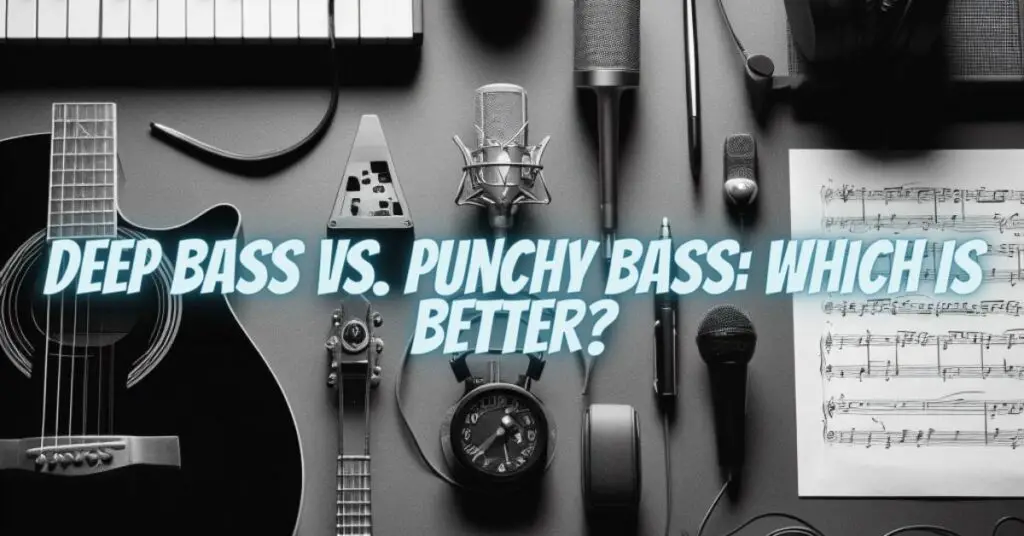The pursuit of the ideal bass sound is a never-ending quest for musicians, producers, and audio enthusiasts. One of the primary considerations when shaping your bass tone is whether to go for deep bass or punchy bass. Both have their unique qualities and applications, and the choice often depends on the musical context and personal preferences. In this article, we will explore the distinctions between deep bass and punchy bass, helping you decide which is better for your specific needs.
Deep Bass: The Foundation of the Sound
Deep bass, also known as sub-bass, refers to the low-frequency content that provides the foundation of a musical composition. Here are some key characteristics of deep bass:
- Frequency Range: Deep bass typically spans the lowest audible frequencies, usually below 60 Hz. These frequencies are often felt more than they are heard and contribute to the overall sense of power and weight in the music.
- Musical Role: Deep bass is the anchor of the rhythm section, providing a sense of foundation and groove. It’s essential for genres like reggae, dub, electronic music, and hip-hop, where sub-bass frequencies dominate.
- Sonic Impact: Deep bass creates a physical sensation, whether it’s the rumbling bass of a massive subwoofer at a concert or the chest-thumping presence of a kick drum in a dance track. It adds an immersive and visceral quality to the listening experience.
- Emotional Resonance: Deep bass can evoke emotions and create tension in music. It’s often used to build anticipation, emphasizing key moments in a composition, such as a drop in an EDM track.
Punchy Bass: The Art of Impact
Punchy bass, on the other hand, focuses on the midrange and upper bass frequencies, delivering a sense of attack and definition to the sound. Here are some key characteristics of punchy bass:
- Frequency Range: Punchy bass typically occupies the mid-bass frequencies, ranging from around 60 Hz to 250 Hz. These frequencies provide clarity and articulation to the bassline.
- Musical Role: Punchy bass is vital for genres like rock, funk, and pop, where the bass guitar needs to cut through the mix and provide a rhythmic groove with tight and defined notes.
- Sonic Impact: Punchy bass has a sharp and immediate presence, allowing the bassline to be heard distinctly in the mix. It adds a sense of urgency and energy to the music.
- Instrument Articulation: For bass guitarists, achieving punchy bass involves techniques like fingerstyle, slap bass, and precise palm muting. These techniques create a percussive quality that makes the bass notes stand out.
Choosing the Right Bass for the Job
The choice between deep bass and punchy bass depends on the musical context and your specific goals:
- Genre: Consider the genre you’re working in. If you’re producing dubstep, you’ll likely want deep, rumbling sub-bass. If you’re playing in a funk band, punchy, articulate bass will be more appropriate.
- Instrumentation: Think about the instruments in the mix. If you have a lot of instruments competing for the low end, punchy bass may be more effective in cutting through the mix. In contrast, if you have ample space for the low frequencies, deep bass can create a lush, immersive sound.
- Emotional Impact: Consider the emotional impact you want to convey. Deep bass can create a sense of grandeur, while punchy bass can bring urgency and excitement.
- Technical Considerations: When recording or producing, ensure that your equipment, including speakers and headphones, can accurately reproduce the desired bass frequencies. Deep bass can strain equipment, especially if it doesn’t have sufficient low-frequency extension.
In the debate of deep bass vs. punchy bass, there’s no definitive answer regarding which is better. The choice depends on the music you’re creating and the emotional impact you want to achieve. In many cases, it’s not about choosing one over the other, but rather finding a balance that complements the composition and provides the desired groove and feel. Both deep and punchy bass have their rightful places in the world of music, and understanding when and how to use them is the key to crafting a compelling bass sound.


